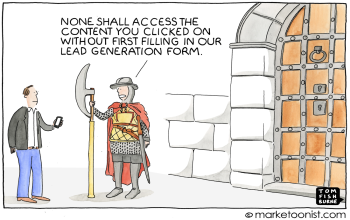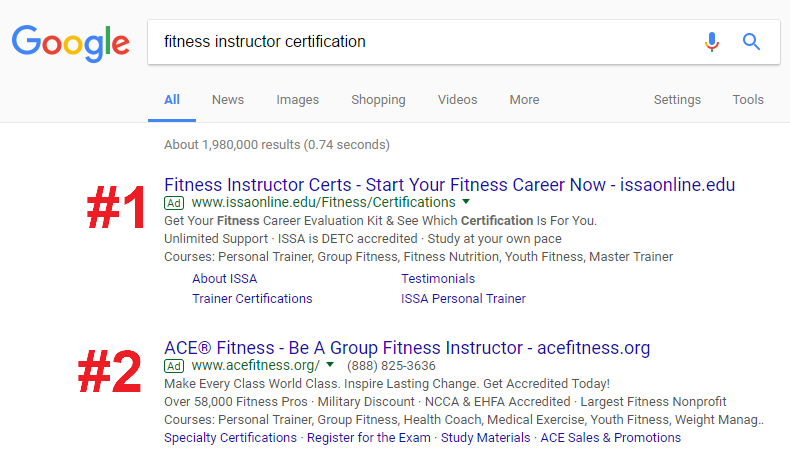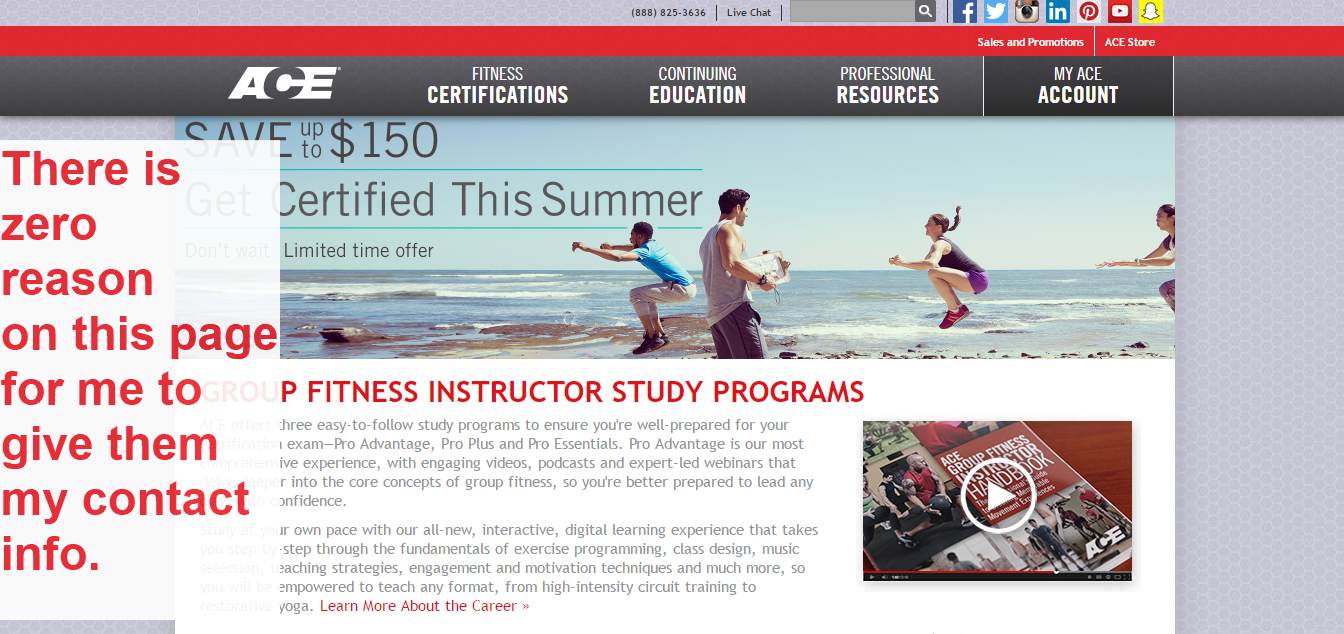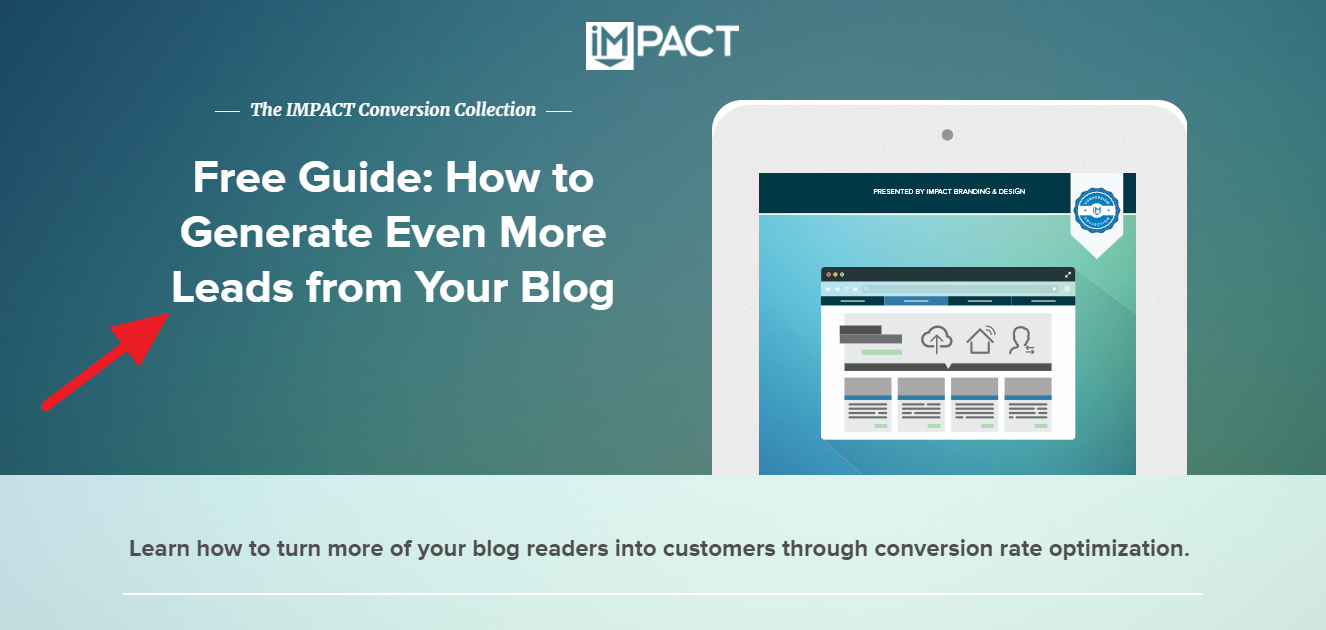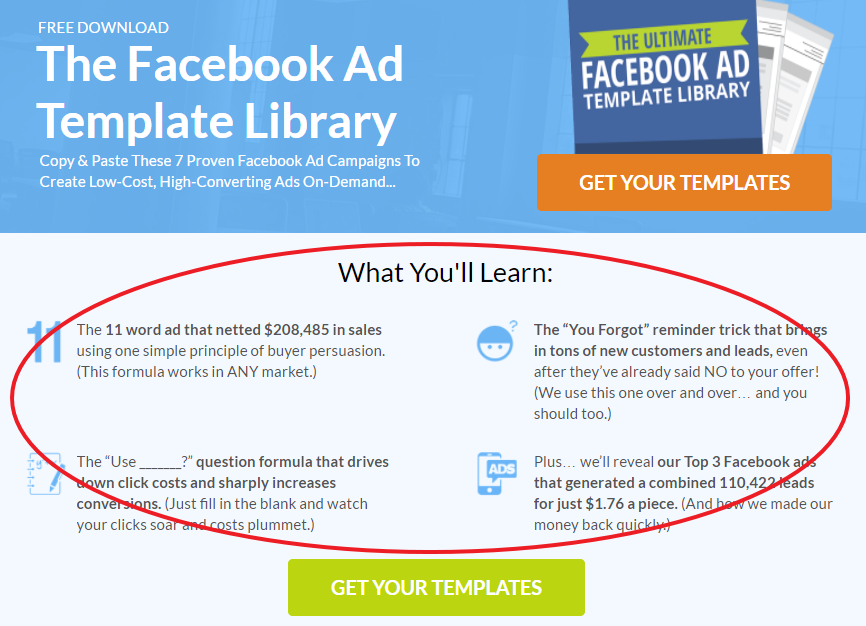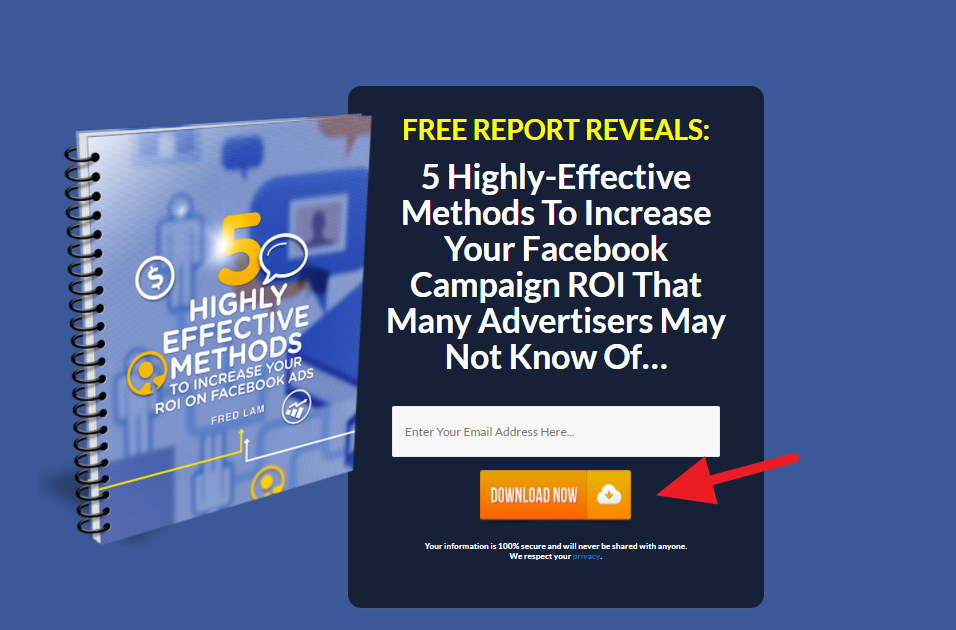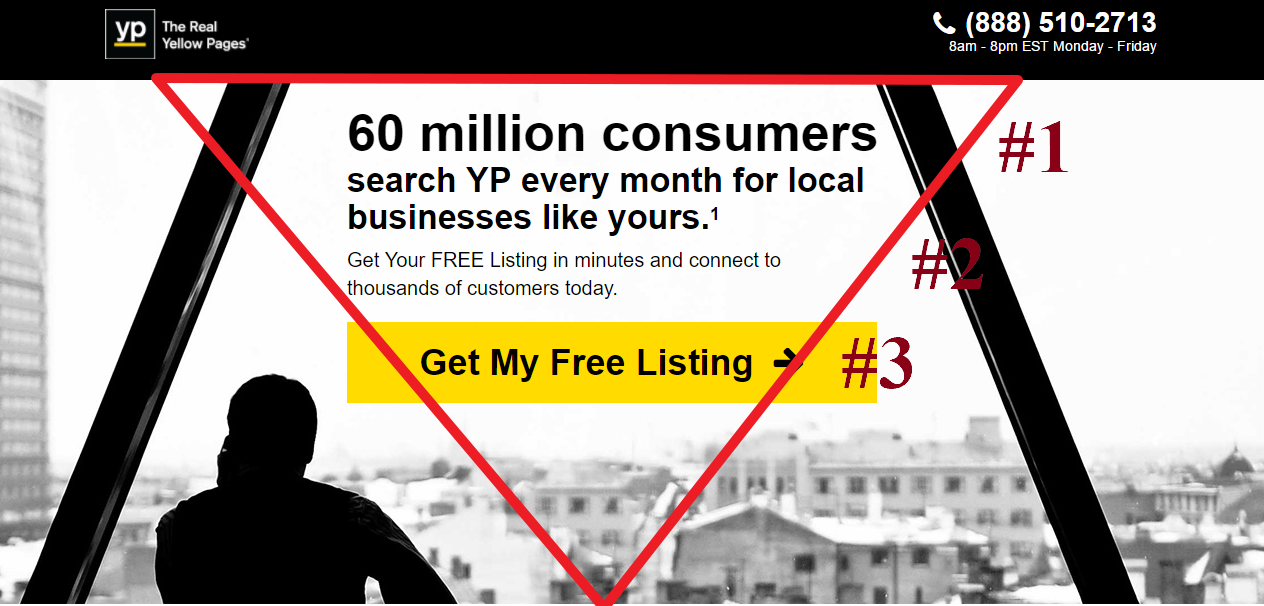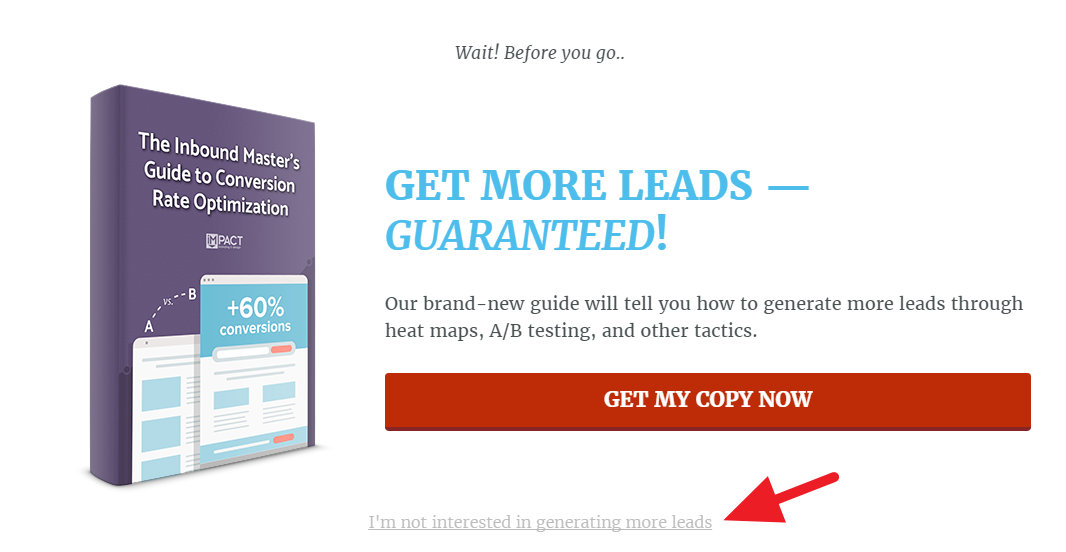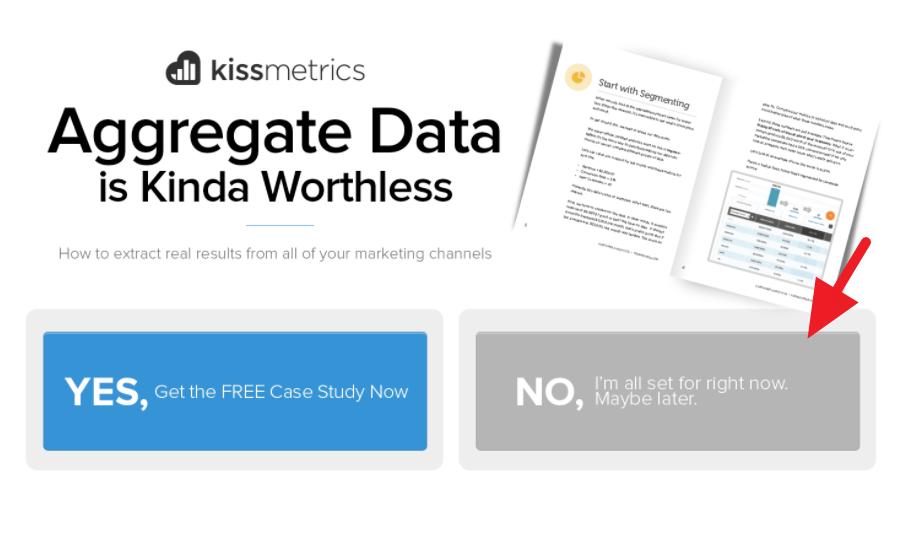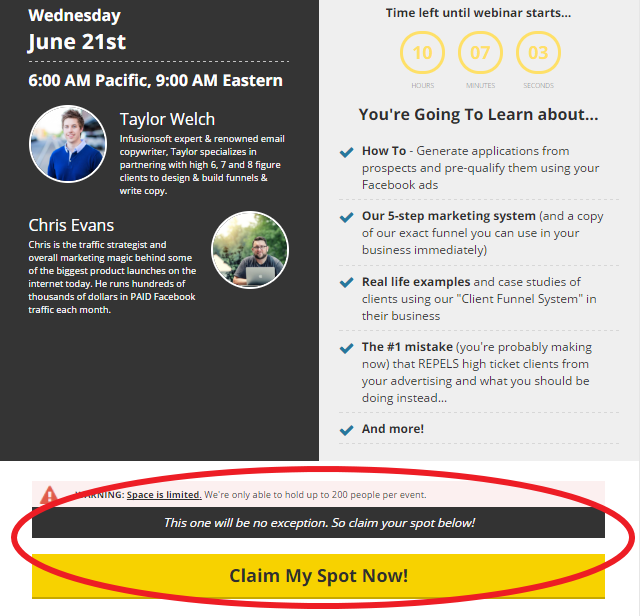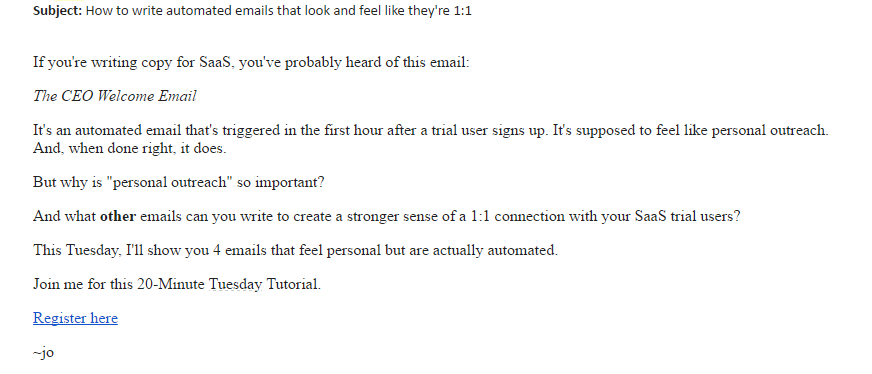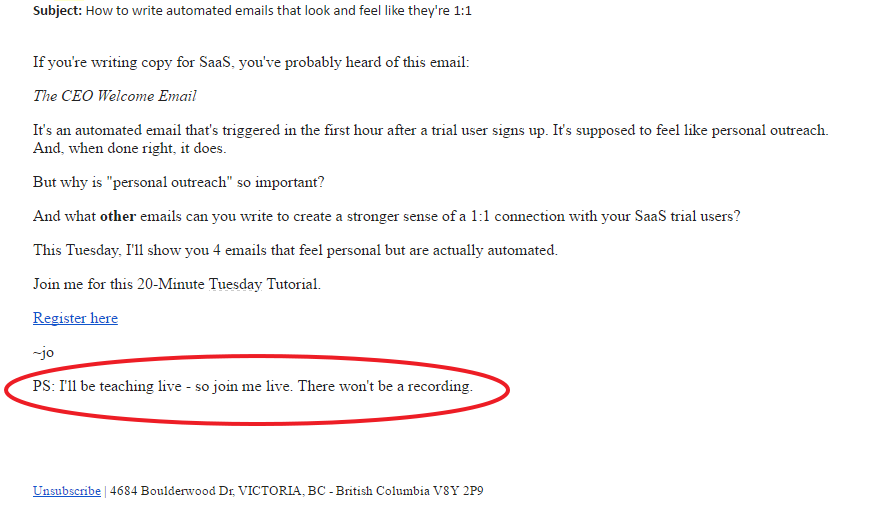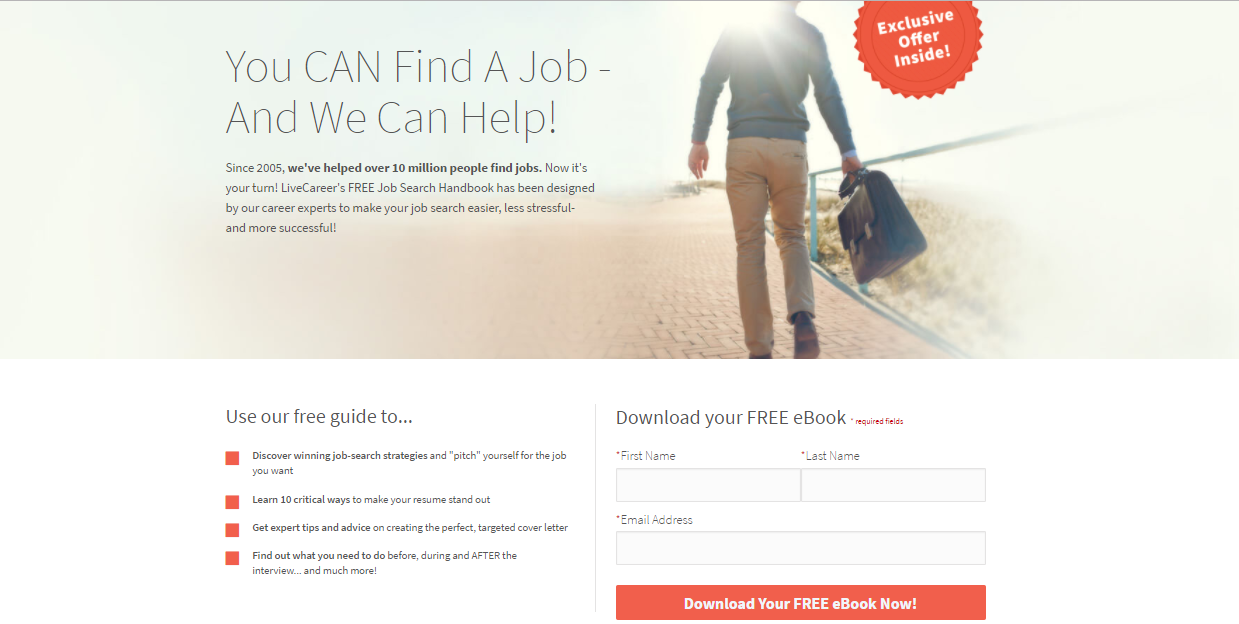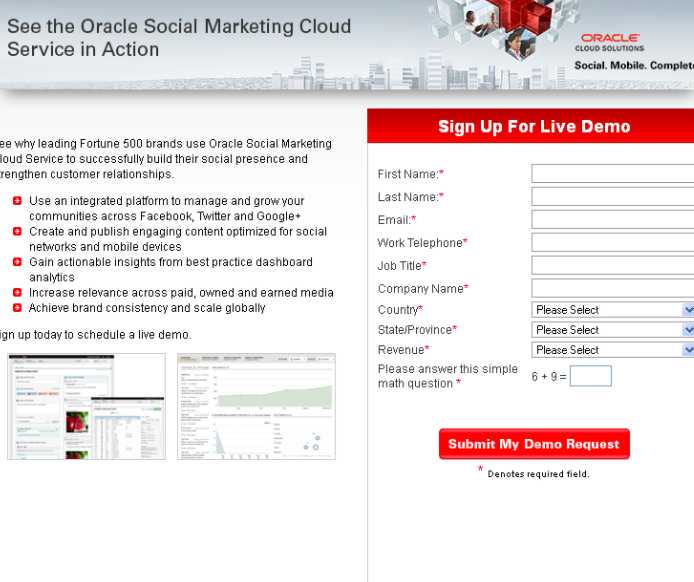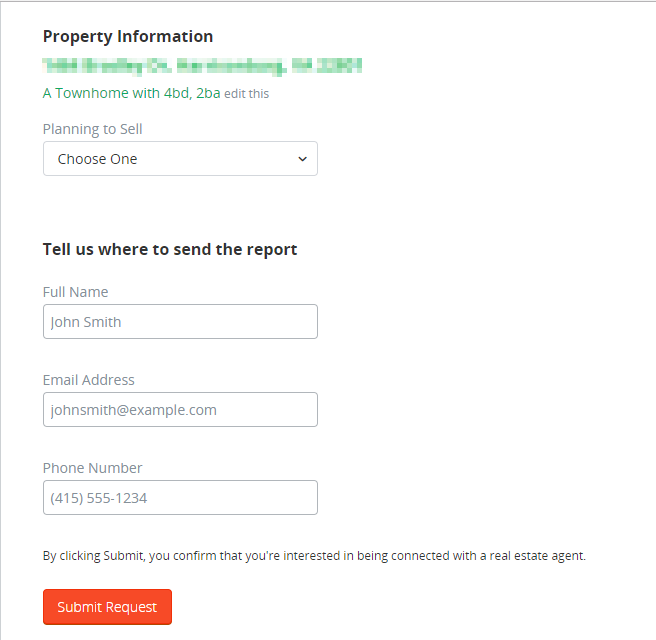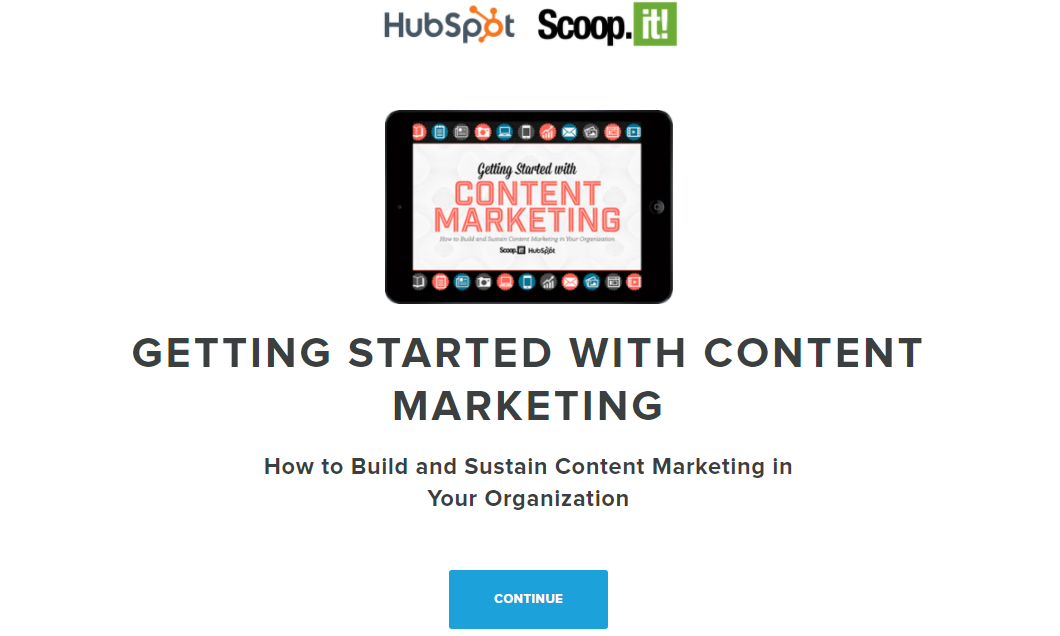So, you got someone (or even a few someones) to click on your AdWords ad…congrats! But what happens now?
If you’re lucky, the clicker will go all the way through your website and make a purchase right there on the spot. But if you can’t get them to buy right away, what’s the next best thing you can do?
Turn them from an anonymous browser to a lead!
And how do you turn an anonymous browser into a lead?
Here are 5 AdWords lead gen hacks (plus a bonus) our experts use to convert browsers into buyers.
But first things first, what does lead generation (or lead gen) actually mean?
Lead gen is basically anything that helps you get the names and contact info for potential customers.
Usually, it’s something you offer – such as an ebook, downloadable worksheet, or webinar – the potential customer for free in exchange for them giving you their name and email address. Click on the link in the yellow box below (you see what I did there?):
And if you don’t bother with any sort of lead gen on your AdWords ads landing pages, you’re missing out on the chance to maintain contact with and give gentle sales nudges to a whole bunch of people who’ve already expressed interest in your business.
Here is an example of how a lead gen works, based on the Google search for the keyword phrase “fitness instructor certification.”
If I click ad #1, I end up on this page:
The lead gen in this case is an evaluation kit. If all goes well, I’ll give you my email in exchange for the kit. Then, I get something for free that helps me and you have the info you need to continue nurturing me through email marketing even if I don’t buy today.
If I click ad #2, I end up on this page.
This page has no lead gen. Maybe (and that’s a big maybe) I’ll read through everything and actually purchase something. But if not, I’m given zero incentive to give this company my contact info.
This means that after I’ve left their website, I’m gone. They’ll have no way of getting in touch or trying to continue me down their sales funnel.
So, which of the two Google ads do you think got more leads? (Hopefully, that’s an easy question.)
But just having some sort of lead gen isn’t enough. To really capture the best leads possible, you also need to get your lead gen just right. So, let’s check out 5 lead generation hacks that’ll help you nail your AdWords landing pages and actually get leads to nurture later on:
1. Get the info with the inverted pyramid.
Email marketing platform Vero describes the inverted pyramid as a successful technique to get email responses. But since emails and lead gens both want prospects to do something, whose to say we can’t try it for our lead gens?
Here is what the inverted pyramid looks like:
[Image source]
This method helps you keep your message short, sweet, and distraction-free for the reader. Seems simple enough, right? Let’s break this down part by part.
At the top of the pyramid: grab attention.
This is one of the oldest marketing rules in the book. If you can’t grab the prospect’s attention right away, they won’t have any reason to keep reading!
In the case of your lead gen, grabbing attention is your headline’s job. It’s best done with an eye-catching, benefit-driven sentence, like this one here:
As you can see, not only is the headline the first thing that stands out, but it says exactly what you’ll get if you opt-in for the lead gen. Plus, the word “free” is emphasized as the first word in the headline….and who doesn’t love free?
In the middle of the pyramid: build anticipation.
This is where you make your prospect excited to be a part of what whatever you are offering. Give them a testimonial, a breakdown of your awesome benefits and features, some stats, or even a message of urgency.
Here is an example. Notice how it uses specific numbers as strong ‘proof’ of the usefulness of the lead gen:
Bottom of the pyramid: CTA (Call To Action)
This is where you tell prospects what you want them to do next. You should have a CTA on most of what you write, and your lead gen is no exception.
Your CTA guides your prospect onto their next steps to becoming a lead. Don’t make them do the work; make the next step nice and obvious.
Here is an example:
By looking at this, the prospect doesn’t have to guess what to do next. Clicking that button is just the natural sequence.
And what does the entire inverted pyramid method look like altogether? Let’s check it out:
2. Improve results with negative CTAs and page exit pop-ups.
What comes to mind when I ask you to think of CTAs (Calls To Action)?
Probably something that sounds like one of these:
Sign up…
Start…
Join…
Click…
Submit…
Get…
But if your lead gen comes in the form of a pop-up on your landing page, consider adding a negative CTA to the mix. In this case, if the prospect doesn’t want to give their info, they’ll have to either actively accept or actively deny your offer.
Here are a few examples:
As you can see here, I’m not able to just click ‘X’ if I don’t want the offer. I have to click a button (the negative CTA) that actively rejects it. And that’s usually enough to make the prospect stop and consider their option one more time.
But if you want to make your negative CTAs to be even more effective, put them on a lead gen exit page pop-up.
Now, we all know that pop-ups can be a little annoying….but to start, exit pop-ups are not like your normal pop-up. Instead of opening up in a new window as soon as you enter a website, they show up when you try to leave.
There are a few different ways you can have them triggered: once a prospect has stayed on the same webpage for a certain number of seconds, when they click the browser’s back button, or if they try to head to another web page.
Basically, the goal of these pop-ups is to keep people on your website and lower bounce rates. And throwing a lead gen with a negative CTA onto one of these pop-ups works double-time to make people consider your offer: first, you grab their attention with an eye-catching pop-up that promotes your lead gen, then you make them stop and think again with your negative CTA.
3. Increase desire with exclusivity.
Exclusivity is a marketing technique that you’ll find in all types of content – webinar signups, landing pages, emails, invite-only mastermind groups….you get the idea. The goal with exclusivity is to make audience members feel like they are missing out if they don’t sign-up or convert right away.
Things like limited time or limited number offers are common forms of exclusivity.
So, finding a way to make your lead gen seem like it is somehow limited can go a long in enticing people to click (plus, it might also put aside those feelings of “oh, I’ll just do it later”).
Here is another way this could work. Imagine you receive the following email in your inbox:
With the email as is, maybe you would sign up, maybe you wouldn’t. But now, read through it again with the clever little PS at the end.
See how much of a difference that quick PS made in your desire to sign up? This is exclusivity and scarcity at their finest. By not recording this webinar, it means this info will only exclusively available to a select group of people: those who sign up for the webinar. If you’re outside this group, you’re out. You miss this info and it’s gone forever.
That gives you a pretty strong motivation to sign up, doesn’t it?
4. Talk to the pain by adding value.
Hopefully, you’ve done enough customer research that you can list off your audience’s pain points with ease.
Now with those in mind, create some sort of lead gen that will actually provide value to your audience members and help them with their pain points. Obviously, this info won’t be so incredibly detailed and thorough that it replaces their need for your service, but do try to make it genuinely helpful.
For example, if your product is a digestive supplement and your prospective customer’s pain points are digestive issues, then offer an ebook about foods that help with digestive issues as your lead gen.
Since someone probably isn’t on your website if they don’t have digestive issues, you can bet your ebook is on a topic that you grab the attention of a lot of your viewers. Plus, if you give them something for free that is actually useful for them, they’ll have a more favorable impression of your company overall.
This page here is another good example of this hack in action.
This is a lead gen for a company that offers job finding services. And I bet you can probably guess what their audience’s main pain point is: they can’t find a job! So, what did this company do? They created a free ebook as a lead generation that actually tries to help with this pain point and offer useful advice.
5. Do the two-step to make them commit.
Have you ever started to complete a lead gen form yourself, only to decide to just ‘X’ out because there were too many parts to fill out?
Well, remember what I said about making things easy for prospects? Check out the example below.
Making prospects feel like they’ll have to do a lot of work just to get their free bonus will probably not keep them on board.
This form looks like a lot of work!
But there’s another way you can do it, especially if you want more info than just a name, email, and phone number: make your lead gen 2 (or more) steps.
Here is how this works.
On the first page, you just ask for one or two pieces of info. Often, this is just classic lead gen info: name and email. But it could also be something else (like in the example below). You don’t want to overwhelm prospects right away, so by starting with just a few sections to fill out makes it a stress-free commitment.
This first page just asks for a single piece of info.
From there, you direct them to another screen where you grab some more info.
As you can imagine, many prospects wouldn’t follow through and fill out their info if the form above was the first thing they saw. But by “softening” them up with a shortened, they’ll be more predisposed to continue.
Bonus: Gate Your Co-Created Content
Well, if you’ve followed our hacks above, then you should already have gated content on your website. (Gated content is just the type of lead gen we’ve been talking about this whole time: content that you have to fill out a contact form to get access to.)
But want to step it up yet another notch? Then either gate your already co-created content, or co-create content to gate.
All this means is that you team up with other companies who have the same audience you do (though aren’t your direct competitors), and you create some sort of content together to use as a lead gen. Then, whichever website the lead gen is promoted on will pass on the leads to the other company.
Scoop.it, a content marketing software, is an example of a company who reaped the benefits of this technique by co-publishing an ebook with Hubspot. Since both companies have similar audiences, they chose a title they knew would appeal to everyone: Getting Started with Content Marketing.
This is what Scoop.it had to say about their experience co-creating content and why they think it’s worth doing:
[Source]
As you can see, gating your co-created content is a win-win for everyone!
Okay, let’s review your lead gen hacks for AdWords landing pages one more time:
1) Get the info with the inverted pyramid.
2) Improve results with negative CTAs.
3) Increase desire with exclusivity.
4) Talk to the pain by adding value.
5) Do the two-step to make them commit.
*Bonus* Co-create gated content.
But remember, even the most perfect of lead gens won’t help you if no one is coming to your website in the first place! So, before you implement these lead gen hacks, make sure you’re generating the traffic through AdWords and other sources you need to be successful.
Not sure if you’re there yet? Then find out on a free 30-minute AdWords consultation with us today.
About The Author
Dave Burnett
I help people make more money online.
Over the years I’ve had lots of fun working with thousands of brands and helping them distribute millions of promotional products and implement multinational rewards and incentive programs.
Now I’m helping great marketers turn their products and services into sustainable online businesses.
How can I help you?
